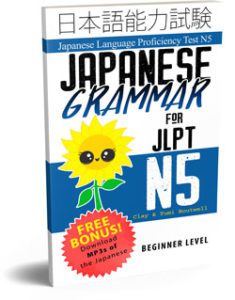Ko-So-A-Do
The ko-so-a-do may seem difficult to grasp, but they are very regular. Learning them early on will definitely help with your progress.
The key is to understand the three positions:
- Near the speaker [the "k" words]
- Near the listener [the "s" words]
- Away from both [the "a" words]
The fourth, "d" words," are the question words.
ABOUT:
These mean the same as これ、それ、あれ、 and どれ. The only difference is these demonstratives must be attached to nouns. In English, we would translate both
これ and この as "this," but in Japanese, これ stands alone and この attaches to a noun.
Compare:
This is a cat. これは、猫です。
This cat is black. この猫は、黒いです。
How to Use:
■ Attach to any noun.
この+NOUN | This (something) [for objects near the speaker] |
その+NOUN | That (something) [for objects near the listener] |
あの+NOUN | That (something) over there [for objects far from both people] |
どの+NOUN |
Which (something)? |
Examples:
この本は、面白いですか?
Is this book interesting?
[an object near the speaker]
あ、その本は、まあまあ面白いです。
Ah, that book is kinda interesting.
[Uses その because it is far from this speaker. まあまあ means "so-so."]
じゃあ、あの本は?
Well, how about that book over there?
[an object far from both speakers]
Which book?






Hi Clay, do you guys produce some sort of index for the things you sell? Right now my beginning class is learning to compose sentences like, “Every day I take a shower in the morning.” No doubt these things are child’s play for you, but not for me. It’s very hard for an old guy to learn a new language. So I thought maybe an index exists so I can look up things like particles that have me confused, or perhaps become better at grammar by looking into several of the items I have purchased. But I don’t know which ones to look into Because they don’t have indexes themselves. I hope that makes sense and I am certainly not complaining. Your publications are world class and I truly enjoy them and I’ve learned quite a bit from them. But at my level there’s only so much I can learn even from a beginning publication Unless my classes is already teaching that area.
Thank you! Actually, I think the perfect book (series) for you is the Dictionary of Basic Japanese Grammar:
https://www.thejapanshop.com/collections/dictionary-of-japanese-grammar/products/a-dictionary-of-basic-japanese-grammar
You may be able to find it cheaper on Amazon, and I won’t begrudge you if you buy from there! But this is an excellent series that has a very easy to use index exactly like you are suggesting. Its one book I bought back in the 1990s that I still refer to occasionally. They also put out an intermediate and advanced grammar book (all excellent).
I’m also slowly going through old TheJapanesePage.com grammar pages like this one and adding more example sentences. I think studying sentences with a common vocabulary word or grammar point is an excellent way to learn usage. And having it broken down by vocabulary and with a sound file is best. So, you’ll see more pages like this one in the near future: https://thejapanesepage.com/naru/
Anyway, please check out the Dictionary of Basic Japanese Grammar if you don’t already have it. It truly is a useful reference / study book.